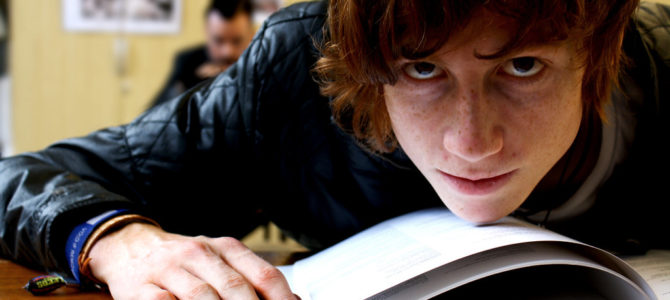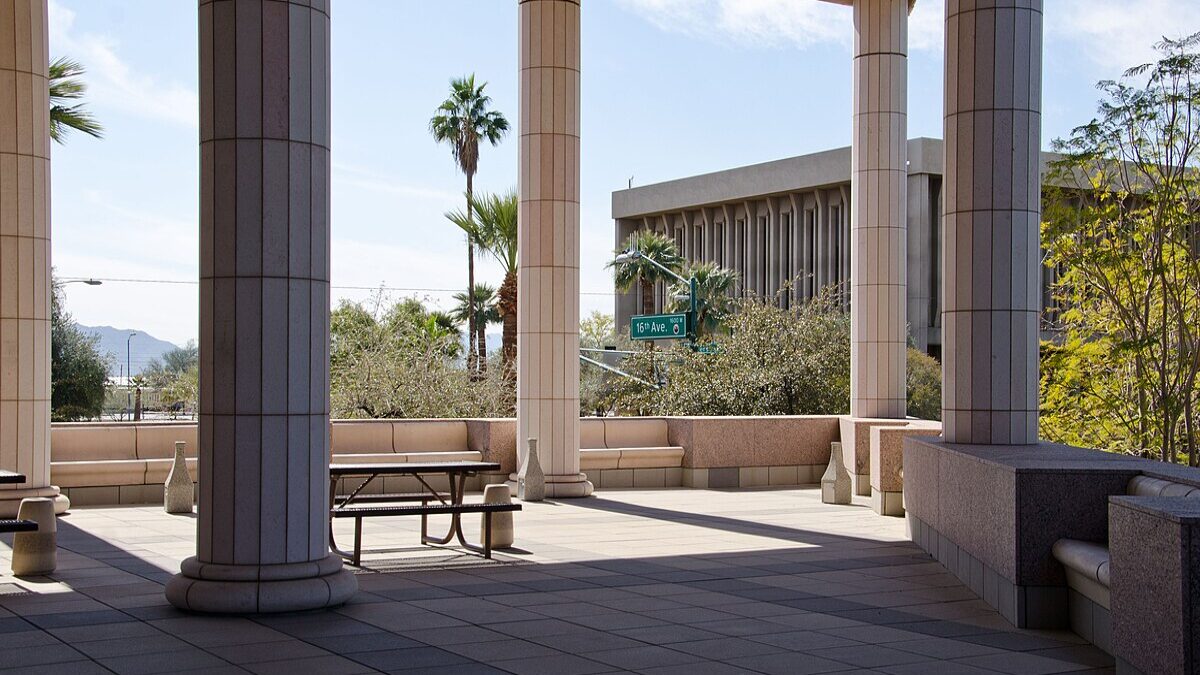
"."by TomBroadbent is licensed under CC BY-NC-ND 2.0
Conservative students enter college with higher SAT scores and GPAs than liberal students, but by the fourth year of college have lower GPAs than liberal peers, which may be a consequence of institutional bias, finds a new working paper from the University of Arkansas.
Self-identified conservative students saw the biggest grade dip when studying in the humanities and social sciences, none when studying in professional fields, and an extra grade advantage when studying in hard-science fields. The bias was more pronounced at higher-ranked colleges and universities.
“Notwithstanding the GPA advantages held by conservative students in high school, students who support banning racist/sexist speech, and who endorse dissent as critical to the political process (positions typically associated with liberalism) enjoy a relative advantage over their peers,” the paper finds.
The authors controlled for students’ family income, SAT scores, and demographics, and repeatedly caution that the GPA effect is comparatively small, although statistically significant, and may have explanations other than professor bias. For example, since other social science has found conservatives tend to follow rules better and score lower on spontaneity and creativity, perhaps those characteristics make them a poorer fit for college or humanities programs.
Statistical analysis on a large database often used by researchers shows that “by the fourth year of college, liberal students tend to have higher grades than conservative peers: ideological self-placement is the only variable in the model changing direction from high school to college” (emphasis original), write paper authors Matthew Woessner of Penn State, Robert Maranto of U-Arkansas, and Amanda Thompson of the University of Georgia. The working paper from U-Arkansas’s Department of Education Reform has not yet been peer-reviewed nor published in an academic journal, but has been released to generate academic input pre-publication, it states.
The paper includes the graph below, showing that conservative students have the highest overall grades in high school, although lower writing and verbal SAT scores than liberal students. This also could reflect conservatives’ higher compliance levels, political biases in the verbal (less objective) portions of tests, neither, or both. Other research has found that high schools highly value compliance and that K-12 teachers award higher grades to more agreeable students and students more similar to them, which lowers boy’s grades compared to girls.

“Rather than political bias, conservatives might earn lower grades if colleges play to the strengths of liberal students,” the paper says. “Prior work shows that liberals more deeply value independence and the creation of original works, while conservatives more deeply value family life, community, and loyalty (Kelly-Woessner and Woessner 2009; Haidt 2012). In short, one could interpret findings here as suggesting that as institutions, high schools fit the strengths of conservatives while colleges fit the strengths of liberals.”
Or perhaps college culture tends to be anti-conservative. The paper notes later that, in the authors’ field experience, students from rich, secular, liberal families adapted better to campus life than did students from conservative, middle-class homes. It suggests that’s because “students from conservative or religious household might face difficulties in the transition to college, losing the structure and community they enjoyed in high school.”
But it also could be that campus cultures can be actively hostile to family, faith, community, and a well-ordered life. A further indication of this comes later, when the paper discusses how students who support same-sex marriage “tend to feel more valued, and believe that faculty see their potential, show concern, and take an interest in their success” when rating their college experience. Students on the opposite side of the issue tend to say the opposite. This, the paper suggests, “opens the possibility that directly or indirectly, opposition to same sex-marriage contributes to alienation among some students.”
If this is just one indicator of the well-known reality that campuses have a culturally leftist bent, it’s no wonder that conservatives would feel less comfortable and have more difficulty adapting. Since conservatives tend to have better self-organization and perform better in the academically more difficult science fields, perhaps a politically leftist culture is a major hindrance to their adjustment to college life.
If we saw these difficulties among liberal students or minorities, we’d no doubt see op-eds in major newspapers and websites about how campus climates are “chilly” and “hostile” to such young people. Don’t expect that to happen when the difficulties apply more to conservative kids.
While all kids’ GPAs dropped in college compared to high school, the conservative students’ grades dropped more than the liberal students’ did. Other research has found that high school GPAs are the best predictor of college achievement, even better than SAT and ACT scores. Conservative students’ high GPAs also dropped more dramatically for some measures of political conservatism than others, as the graph below from the paper shows.

“[H]olding all else constant, the most liberal student would enjoy a 0.16 point advantage over the most conservative student on a 7 point scale. Given our large sample size [of more than 7,000 students], this difference is statistically significant,” says the paper.
Students’ views on abortion had the strongest relationship with conservatives’ high school to college grade drop, partly because pro-life students had the highest average high school GPAs. At medium to low-prestige higher education institutions, pro-life students’ academic achievement actually increased, but at high-prestige schools their advantage was erased. The reverse happened with students who opposed free speech: they saw higher grades in college than their high school performance would have projected.
“Whereas the advantage enjoyed by pro-life students declines, the advantage of those who would ban racist/sexist speech or who value dissent grows,” the paper notes.
Another factor here is that while college professors massively more leftist than the general American population, K-12 teachers are also significantly farther left than most Americans. Fifty percent of K-12 teachers voted for Hillary Clinton in 2016, compared to 29 percent voting for Donald Trump. Forty-one percent of teachers identify as Democrats, and only 27 percent as Republicans, according to a 2017 poll by the trade publication Education Week. That’s a 12-point higher percentage of Democrats among K-12 teachers than among the general American public.
By comparison, a recent study found that high-ranked liberal arts colleges employ ten self-described Democrat professors for every one Republican. So if bias unfairly deflates conservative students’ achievements in college, it probably has an effect in high school, also, especially since these biased colleges train K-12 teachers. Bias just may not affect K-12 students as much as it does college students.
This may be one reason that public schools are the top choice for only one-third of American parents, even though eight in ten of those same parents have their kids enrolled in public schools. A recent poll in Wisconsin found that two-thirds of Republican voters are worried about politics in their kids’ public schools, and it’s certain they’re not alone. The question is: Are conservative parents and GOP politicians going to do anything serious about a system stacked against their kids?













